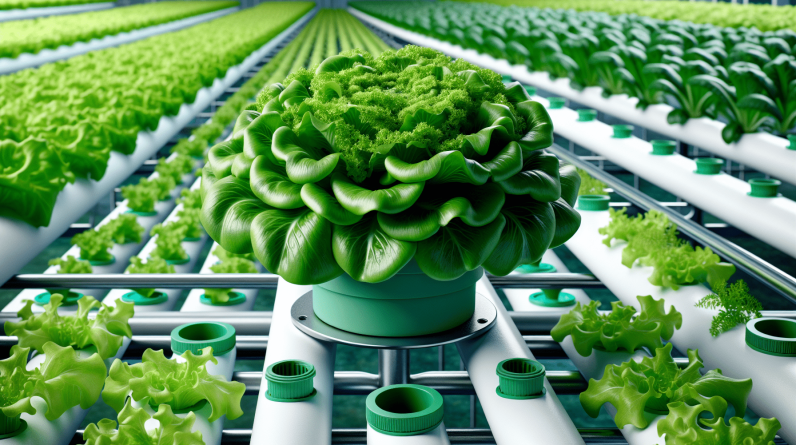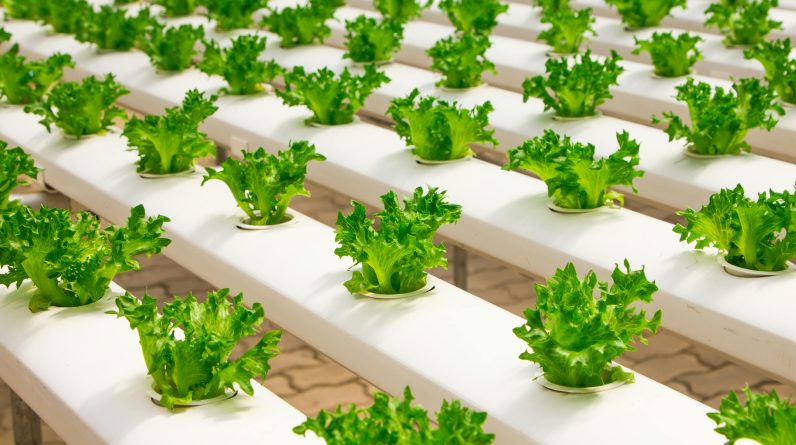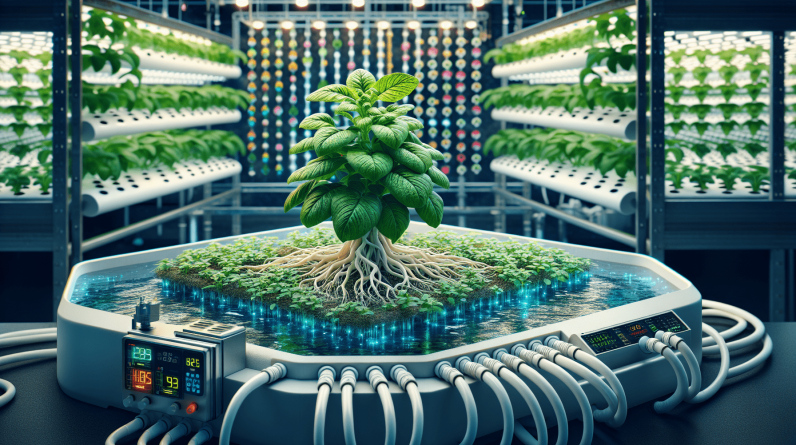
Imagine being able to grow fresh, nutritious fruits and vegetables right in your own home, without the need for a traditional soil-based garden. With hydroponic farming, this dream becomes a reality. Hydroponic farming is a modern agricultural method that involves growing plants without soil, using nutrient-rich water as the medium. This innovative technique allows for increased plant growth, efficient space utilization, and no dependence on weather conditions. Whether you’re a seasoned gardener or a beginner looking to embark on a greener journey, hydroponic farming opens up a whole new world of possibilities for fresh, sustainable food production.
What is Hydroponic Farming?
Hydroponic farming is a revolutionary method of growing plants without the use of traditional soil. Instead, it relies on the delivery of essential nutrients directly to the plant’s roots through a water-based solution. This innovative approach offers numerous advantages over conventional farming methods and is gaining popularity in both commercial and home gardening.
Definition
Hydroponics, by definition, is a technique of growing plants in a nutrient-rich water solution, with the absence of soil. Instead of extracting nutrients from the soil, plants grown hydroponically derive their nourishment directly from the water in which they are immersed or that is circulated through their root systems.
History of Hydroponics
Hydroponics can be traced back to ancient civilizations such as the Hanging Gardens of Babylon, where plants were grown in water-filled gardens. However, the modern concept of hydroponics emerged in the 19th century when researchers and scientists began experimenting with soil-less cultivation. Notably, Dr. William Frederick Gericke, a professor at the University of California, is often credited with popularizing hydroponic farming in the 1930s by demonstrating successful crop production using the technique.
Advantages of Hydroponic Farming
Water Conservation
One of the significant advantages of hydroponic farming is its remarkable water efficiency. Traditional agricultural practices consume vast amounts of water, but hydroponics uses only a fraction of the water required to grow crops in soil. By recycling and reusing the nutrient solution, hydroponics minimizes water waste, making it an environmentally friendly and sustainable option for food production.
Faster Plant Growth
Hydroponic farming provides optimal conditions for plant growth by delivering nutrients directly to the roots. As a result, plants in hydroponic systems typically experience faster growth rates compared to traditional soil-based methods. This accelerated growth is attributed to the plants’ ability to focus their energy on vegetative development rather than root expansion, resulting in higher yields and shorter harvesting times.
Year-Round Production
Hydroponic farming is not constrained by seasonal limitations, making it possible to cultivate crops year-round. By controlling crucial environmental factors such as temperature, humidity, and light, hydroponics provides a consistent and controlled environment for plant growth. This allows farmers to produce fresh and high-quality produce regardless of the external climate, providing a steady and reliable food supply.
Space Efficiency
With the increasing global population and limited arable land, space-efficient agricultural solutions are in high demand. Hydroponic systems answer this need by utilizing vertical and horizontal spaces more efficiently than traditional farming methods. By growing plants in carefully designed structures, farmers can optimize the use of available space and achieve higher crop yields per square meter. This makes hydroponic farming particularly suitable for urban areas and areas with limited land resources.
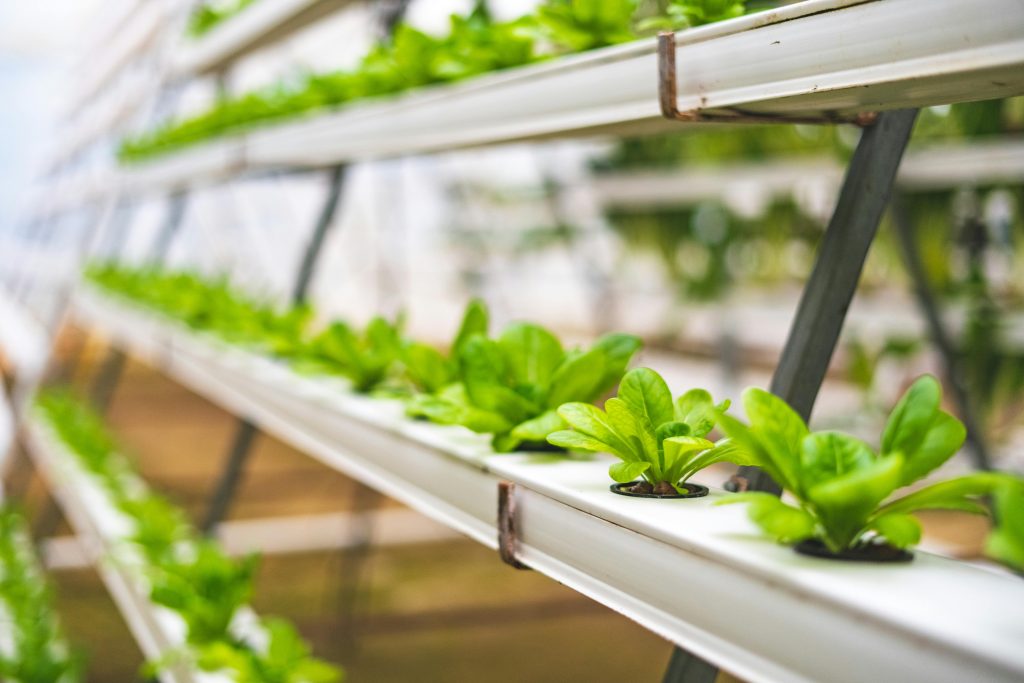
Different Hydroponic Systems
Nutrient Film Technique (NFT)
Nutrient Film Technique (NFT) is a popular hydroponic system that involves a shallow, continuously flowing stream of nutrient solution. Plants are placed in channels or troughs, and the nutrient-laden film is circulated around their roots. This method provides a constant supply of oxygen, water, and nutrients to the plants, promoting their healthy growth.
Deep Water Culture (DWC)
Deep Water Culture (DWC) is a simple yet effective hydroponic system. In DWC, plants are suspended above a nutrient solution reservoir, with their roots constantly submerged. Air stones or diffusers are used to oxygenate the water, ensuring that the plants receive the necessary oxygen for root development. This system is popular for its ease of setup and maintenance, making it suitable for beginners in hydroponic farming.
Drip Irrigation System
The drip irrigation system is a widely used hydroponic method that involves delivering nutrient solution directly to the plant roots through a drip emitters system. This system provides precise control over the amount of water and nutrients delivered to each plant, reducing water wastage and ensuring optimal nutrient absorption. The drip irrigation system is versatile and can be used for various crop types and sizes.
Aeroponics
Aeroponics is an advanced hydroponic system that suspends plant roots in the air while delivering a fine mist of nutrient solution. The roots are kept in a highly oxygenated environment, maximizing nutrient absorption and promoting vigorous plant growth. Aeroponics allows for faster growth rates and higher yields, making it an ideal choice for commercial hydroponic farming.
Wick System
The wick system is one of the simplest and most passive hydroponic systems. In this method, plants are placed in an inert growing medium, and a wick made of absorbent material, such as cotton, delivers nutrient solution from a reservoir to the roots. As the plants absorb the solution, capillary action draws more nutrients to the roots. The wick system is low-cost, easy to set up, and requires minimal maintenance.
Essential Components for Hydroponic Farming
Growing Mediums
In hydroponic farming, traditional soil is replaced with various growing mediums that provide support for plants while allowing their roots to access water and nutrients. Some commonly used growing mediums include expanded clay pellets, rockwool, coconut coir, perlite, and vermiculite. The choice of growing medium depends on factors such as plant species, system type, and water retention capabilities.
Nutrient Solutions
nutrient solutions are the cornerstone of hydroponic farming. These solutions consist of a carefully balanced mixture of essential minerals, salts, and microorganisms that plants need for healthy growth. Commercially available nutrient solutions are formulated to suit different plant stages and growth requirements. In some hydroponic systems, such as recirculating systems, nutrient solutions can be continuously adjusted and monitored to maintain optimal nutrient levels.
Lighting Systems
Unlike traditional farming, hydroponic farming often requires supplemental lighting to compensate for limited natural sunlight. High-quality artificial lighting, such as LED or fluorescent lights, provides the necessary spectrum and intensity for optimal plant growth. These lighting systems can be customized to simulate different seasons or the specific lighting requirements of different plant species.
pH and EC Control
Maintaining the correct pH level and electrical conductivity (EC) of the nutrient solution is vital for hydroponic farming success. pH refers to the acidity or alkalinity of the solution, while EC measures its electrical conductivity, which indicates the concentration of dissolved minerals. Monitoring and adjusting pH and EC levels ensure that plants can absorb nutrients effectively. pH levels are typically adjusted using pH regulators, while EC is controlled by adjusting the nutrient concentration in the solution.
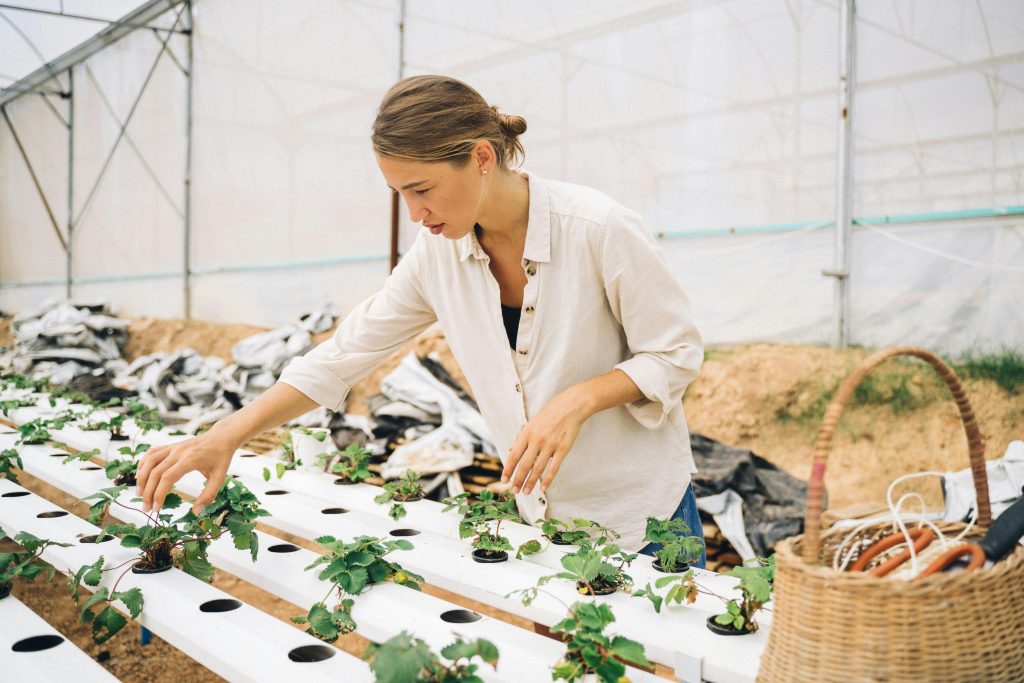
Types of Plants Suitable for Hydroponic Farming
Leafy Greens
Leafy greens, such as lettuce, spinach, and kale, are well-suited for hydroponic farming. These plants have shallow root systems and grow quickly, making them ideal for nutrient film technique (NFT) systems or other similar methods. Hydroponic leafy greens are known for their crisp textures, vibrant colors, and high nutritional value.
Herbs
Herbs like basil, mint, and cilantro thrive in hydroponic systems. The controlled environment of hydroponics allows for precise temperature and humidity control, promoting robust herb growth and intense flavors. Hydroponically cultivated herbs are prized for their freshness, extended shelf life, and consistent quality.
Tomatoes
Tomatoes are a favorite crop for hydroponic farming due to their high demand and potential for year-round production. The vertical growth habit of certain tomato varieties makes them suitable for trellis or vertical hydroponic systems. Hydroponic tomatoes are known for their rich flavors, vibrant colors, and resistance to soil-borne diseases.
Cucumbers
Cucumbers are another popular choice for hydroponic farming. With the support of trellises or strings, cucumbers can grow vertically, optimizing space utilization. Hydroponic cucumbers typically exhibit uniform shapes, sizes, and textures, making them visually appealing and marketable.
Strawberries
Hydroponic farming offers an ideal environment for growing strawberries, as it allows precise control over temperature, humidity, and nutrient levels. Strawberries grown hydroponically tend to produce larger fruits, have longer shelf life, and are less susceptible to pests and diseases. This makes them a highly profitable crop for both commercial and home hydroponic systems.
Common Challenges in Hydroponic Farming
Nutrient Imbalances
Maintaining appropriate nutrient levels in hydroponic systems can be challenging. Imbalances in nutrient concentrations can lead to plant deficiencies or toxicities, affecting growth and overall health. Regular monitoring and adjustments of nutrient solutions are crucial to avoid these imbalances and ensure optimal plant development.
Disease and Pest Control
While hydroponic farming minimizes the risks associated with soil-borne diseases and pests, it is not completely immune to them. Plant pathogens and pests can still affect hydroponic crops, spreading through the water or airborne particles. Implementing proper sanitation practices, using sterilized equipment, and regularly inspecting plants for signs of disease or infestation are essential for preventing and managing such issues.
System Malfunctions
As with any farming method, hydroponic systems can experience technical issues and malfunctions. Power outages, water pump failures, or sensor malfunctions can disrupt the delivery of water, nutrients, and environmental control. Regular maintenance, system inspections, and backup plans can help mitigate the impact of such disruptions and ensure the continuous operation of the hydroponic system.
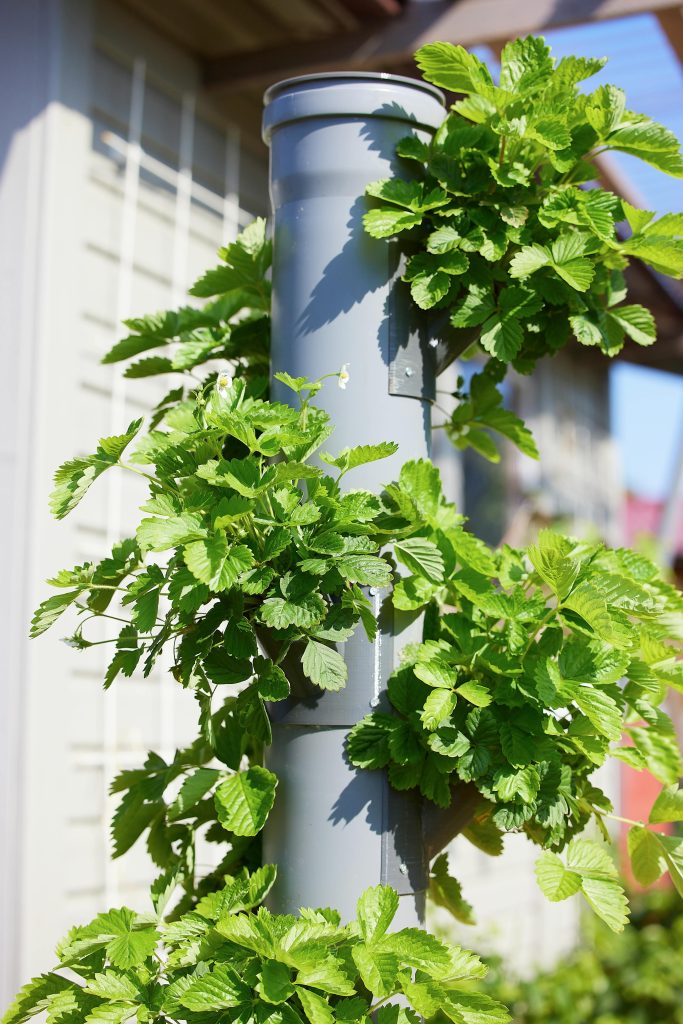
Best Practices for Hydroponic Farming
Proper Nutrient Management
Maintaining a balanced nutrient solution is crucial for successful hydroponic farming. Regularly monitoring nutrient levels, adjusting nutrient concentrations as needed, and providing plants with the optimal combination of macronutrients and micronutrients are essential for healthy plant growth. Following recommended nutrient schedules and consulting with experts can help farmers achieve maximum yields and crop quality.
Maintaining pH and EC Levels
Monitoring and managing pH and EC levels are critical aspects of hydroponic farming. Regularly measuring pH and EC and making adjustments when necessary ensure that plants can effectively absorb nutrients. Maintaining the appropriate pH range (typically between 5.5 and 6.5) and EC levels specific to the crop being grown are vital for optimal growth and yield.
Hygiene and Sanitation
Maintaining proper hygiene and sanitation practices is crucial for preventing the spread of diseases and pests in hydroponic systems. Cleanliness should be maintained throughout the system, including equipment, reservoirs, and growing mediums. Regularly sterilizing equipment and ensuring a clean and controlled environment help prevent the buildup of harmful microorganisms and avoid contamination that could affect crop health.
Regular Monitoring and Maintenance
Consistent monitoring of environmental factors such as temperature, humidity, lighting, and water quality is essential for successful hydroponic farming. Regularly inspecting plants, checking system functionality, and addressing any issues promptly can prevent potential problems and optimize crop production. Automated monitoring systems, data loggers, and sensors can assist in real-time tracking and alert farmers to any deviations or abnormalities.
Commercial Hydroponic Farming
Global Adoption
Commercial hydroponic farming has gained significant traction globally, driven by the increasing demand for sustainable agricultural practices and the need for efficient food production. From large-scale vertical farms in urban areas to greenhouse operations in rural settings, hydroponics allows farmers to produce high-quality crops year-round, regardless of regional climate limitations.
Benefits for Restaurants and Grocers
Hydroponic farming offers several advantages for restaurants and grocers. The controlled growing environment and shorter supply chain mean that hydroponic produce is often fresher, more flavorful, and has a longer shelf life. This makes it an attractive choice for culinary professionals who prioritize quality ingredients. Additionally, hydroponic farming’s minimal land footprint and water-saving capabilities align with sustainable sourcing goals, making it a preferred choice for environmentally conscious establishments.
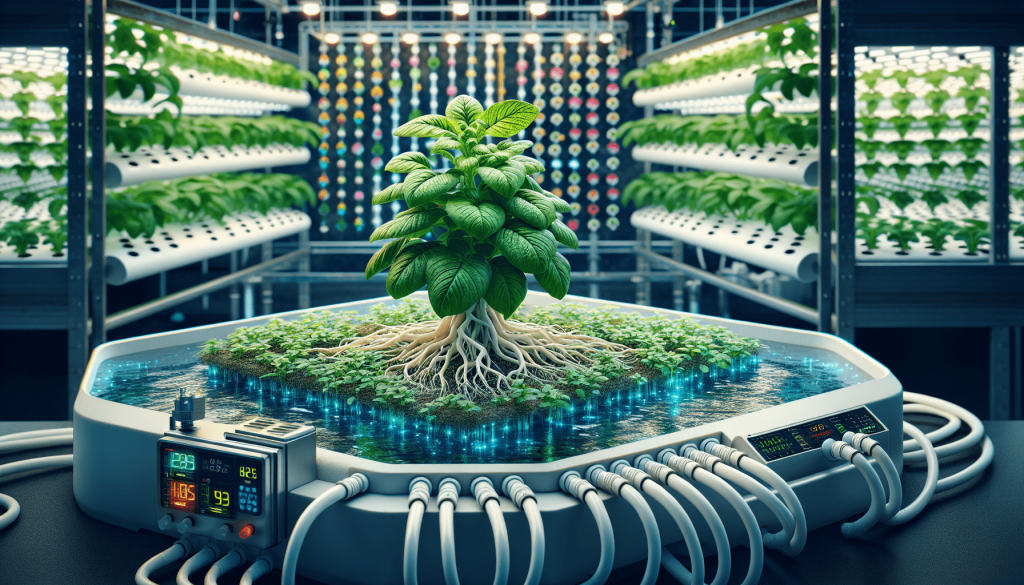
Hydroponic Farming at Home
DIY Hydroponic Systems
Hydroponic farming is not limited to large-scale operations; it can be easily implemented at home using DIY hydroponic systems. With readily available resources and materials, hobbyists and gardening enthusiasts can build their hydroponic setups. These systems can range from simple, beginner-friendly options to more advanced setups depending on the space, budget, and desired crop selection.
Indoor Gardening
Hydroponic farming offers a solution for indoor gardening, especially in areas with limited outdoor space or challenging climates. The controlled environment of indoor hydroponics allows for year-round plant growth with precise control over temperature, light, and humidity. This makes it possible to grow a variety of crops, including herbs, salad greens, and smaller fruiting plants in the comfort of one’s own home.
Urban Farming
Hydroponic farming has opened up new possibilities for urban agriculture. By utilizing vertical farming techniques and optimizing space use, hydroponics allows urban dwellers to turn rooftops, balconies, and unused indoor spaces into thriving gardens. Urban farmers can grow fresh produce, contributing to local food security, reducing food miles, and creating a sense of community around sustainable agriculture.
The Future of Hydroponic Farming
Advancements in Technology
Technological advancements in hydroponic farming have the potential to revolutionize the industry further. Automation and sensor technologies enable precise control and monitoring of environmental factors, optimizing crop growth and resource efficiency. Remote monitoring and real-time data analysis allow farmers to make informed decisions and quickly address any issues. As technology continues to evolve, hydroponic farming is expected to become even more efficient, productive, and accessible.
Vertical Farming
Vertical farming, a form of hydroponic farming, is gaining popularity due to its high crop density and space efficiency. With vertical systems, plants are stacked in multiple layers, efficiently utilizing vertical space while maximizing yields per square meter. This approach is particularly attractive in urban areas where land is scarce. Vertical farming also minimizes the need for pesticides and herbicides, making it a sustainable solution for future food production.
Integration of Automation and AI
The integration of automation and artificial intelligence (AI) holds great potential for the future of hydroponic farming. Automated systems can regulate environmental factors, adjust nutrient concentrations, and manage water usage more precisely. AI-powered algorithms can analyze vast amounts of data, enabling predictive analytics and providing actionable insights for optimizing crop growth and resource allocation. These advancements have the potential to revolutionize hydroponic farming, making it more efficient, productive, and sustainable.
In conclusion, hydroponic farming is an innovative and sustainable method of growing plants without soil. By providing a controlled environment, efficient resource utilization, and year-round production capabilities, hydroponics offers numerous advantages over conventional farming methods. From leafy greens and herbs to tomatoes, strawberries, and cucumbers, a wide range of crops can be successfully cultivated hydroponically. Whether for commercial ventures or small-scale projects at home, hydroponic farming is paving the way for the future of agriculture. With advancements in technology and the integration of automation and AI, the potential for even greater efficiency and productivity in hydroponic farming is within reach. As we look ahead, hydroponics will continue to play a significant role in ensuring sustainable food production and meeting the growing global demand for fresh, high-quality produce.
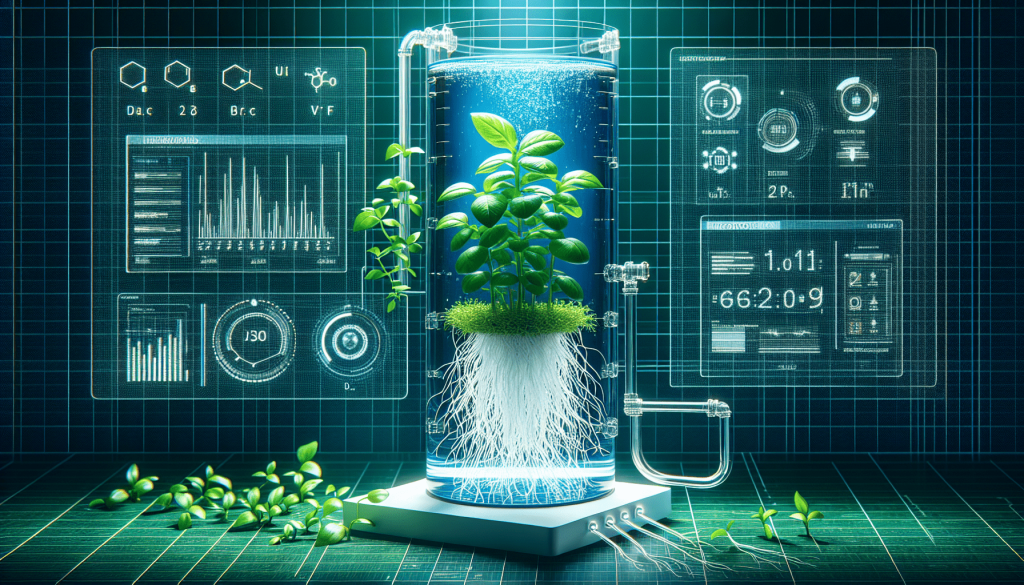
Related Content
- The Ultimate Guide to the Best Hydroponic Lights in 2025 for Thriving Growth
- The Ultimate Guide to Hydroponic Farming in 2025: 7 Effective Strategies to Maximize Yield
- How to Grow Hydroponic Kale for Nutrient-Dense Greens
- 10 Effective hydroponic garden ideas for a thriving 2025 setup
- Maximizing Space and Yield with Vertical Hydroponics




